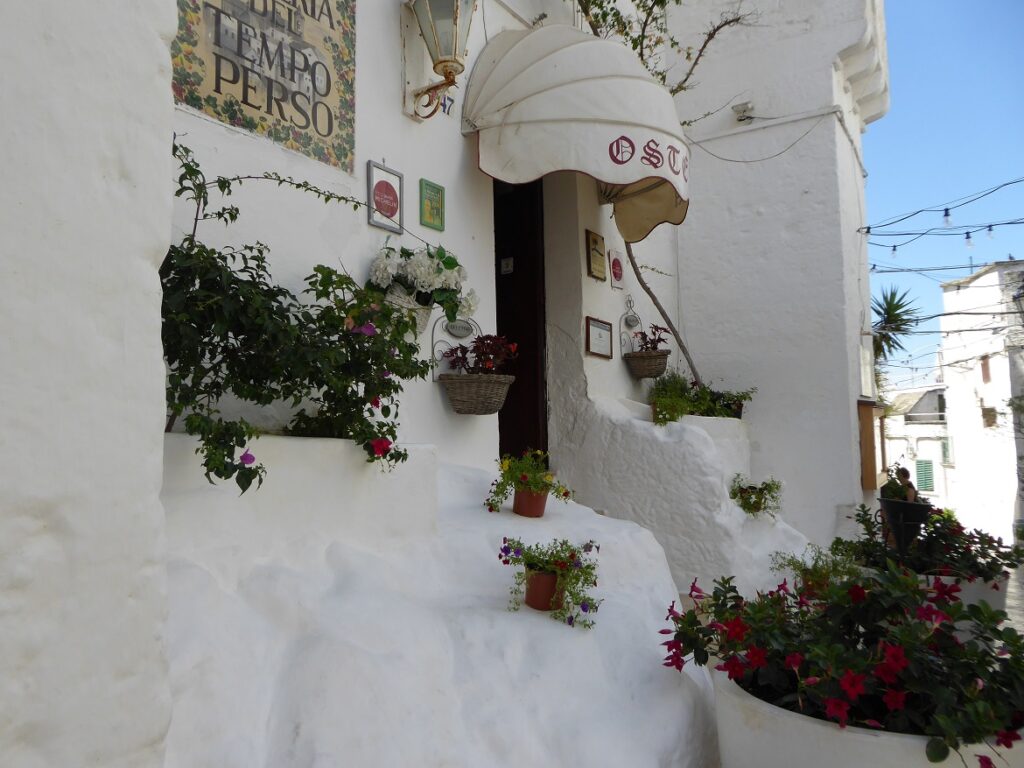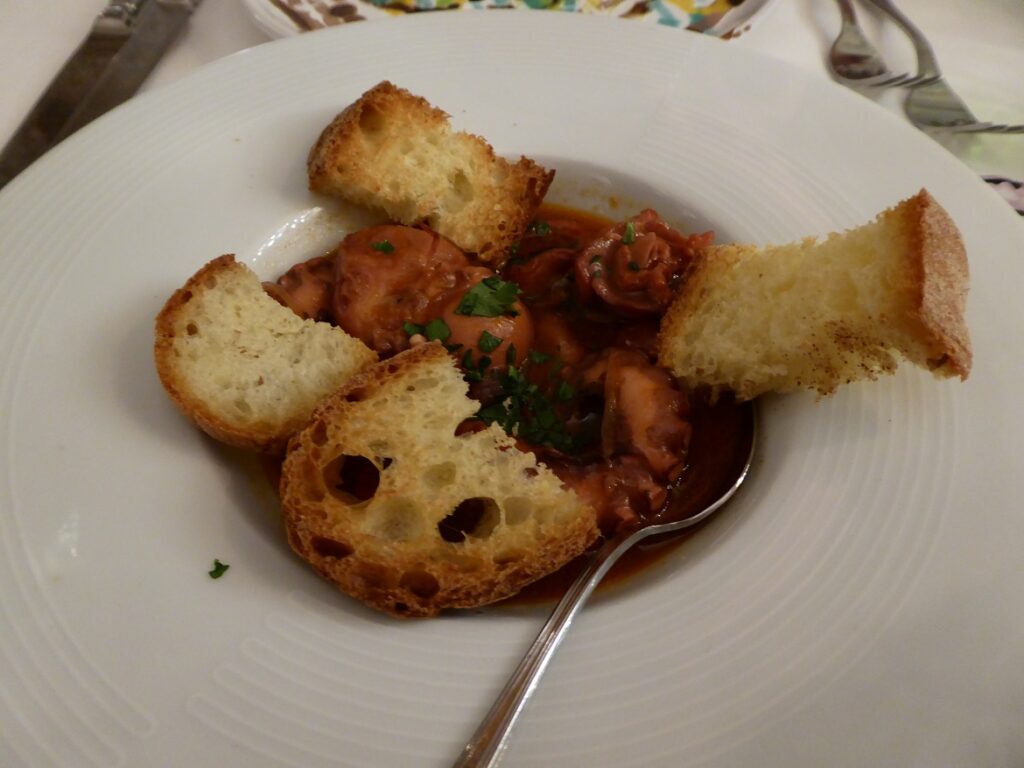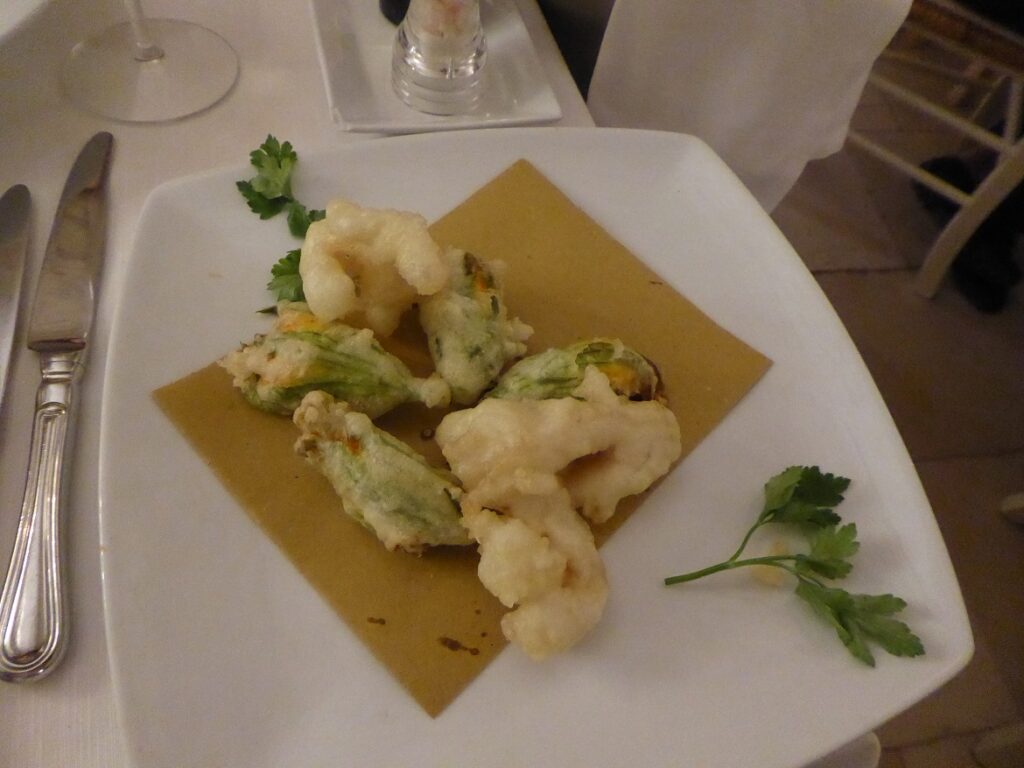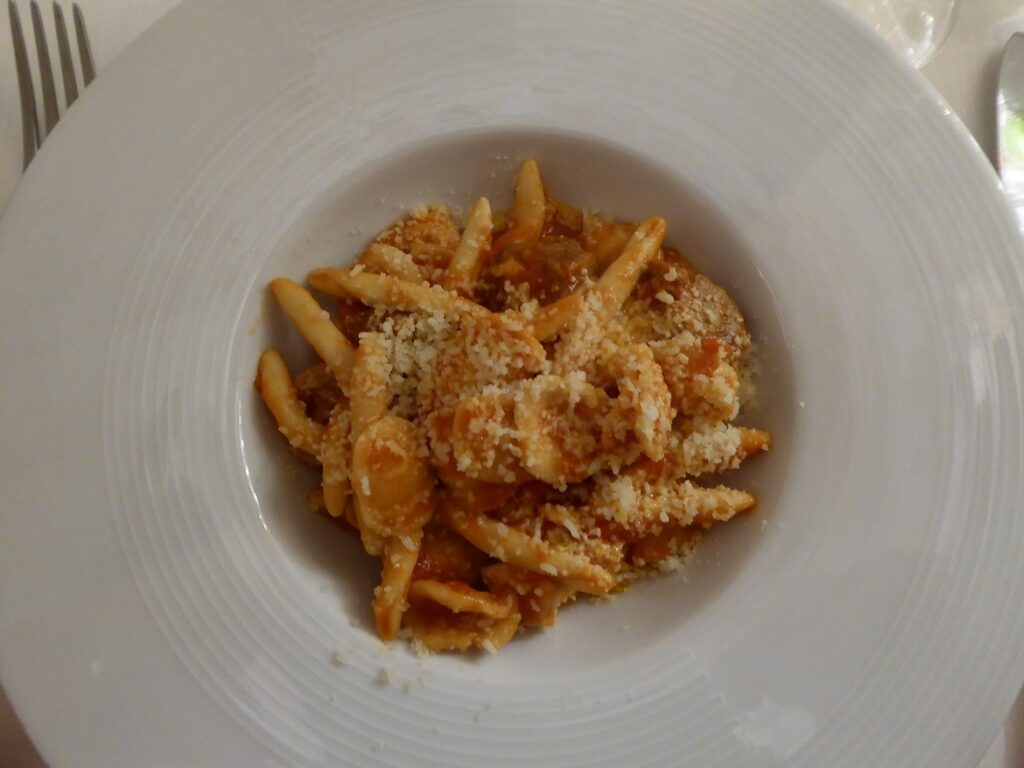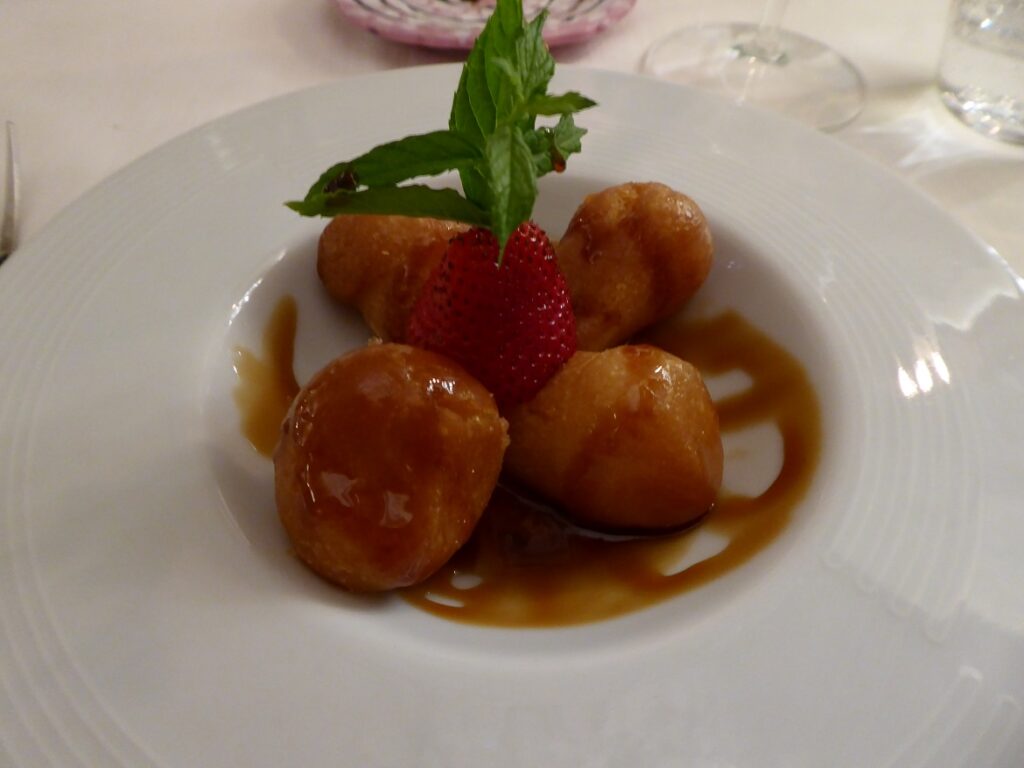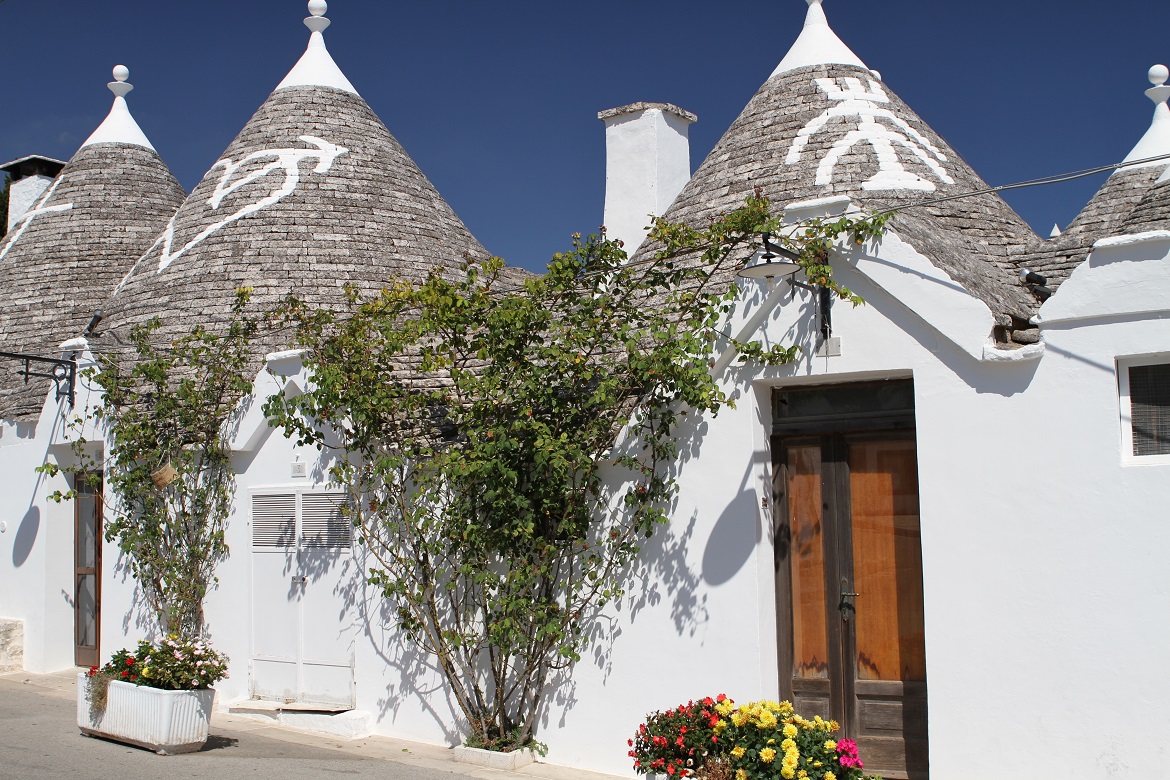Back in 2016 we enjoyed an epic (for us!) train travel based holiday starting in Amsterdam, and visiting Brussels, Paris, Venice, Positano, Ostuni, Lecce, then flying home from Rome. We caught trains between each of these cities, the exception being a flight from Paris into Venice.
One of the highlights of the trip was the ‘White City’ of Ostuni located in Italy’s southern region of Puglia (click here to read about our stay), and in particular, taking a day trip from Ostuni to see the Trulli of Alberobello.

The Trulli
“What are Trulli?”, I hear you ask. Trulli, or a Trullo when referring to just one, are small limestone buildings which are built by stacking rock without the use of any form of mortar. They are round and have conical roofs (a shape that supports the lack of mortar), and look quite unique. The Trulli feature in UNESCO’s World Heritage List.
The town of Alberobello is one of the very few places where you will find Trulli.

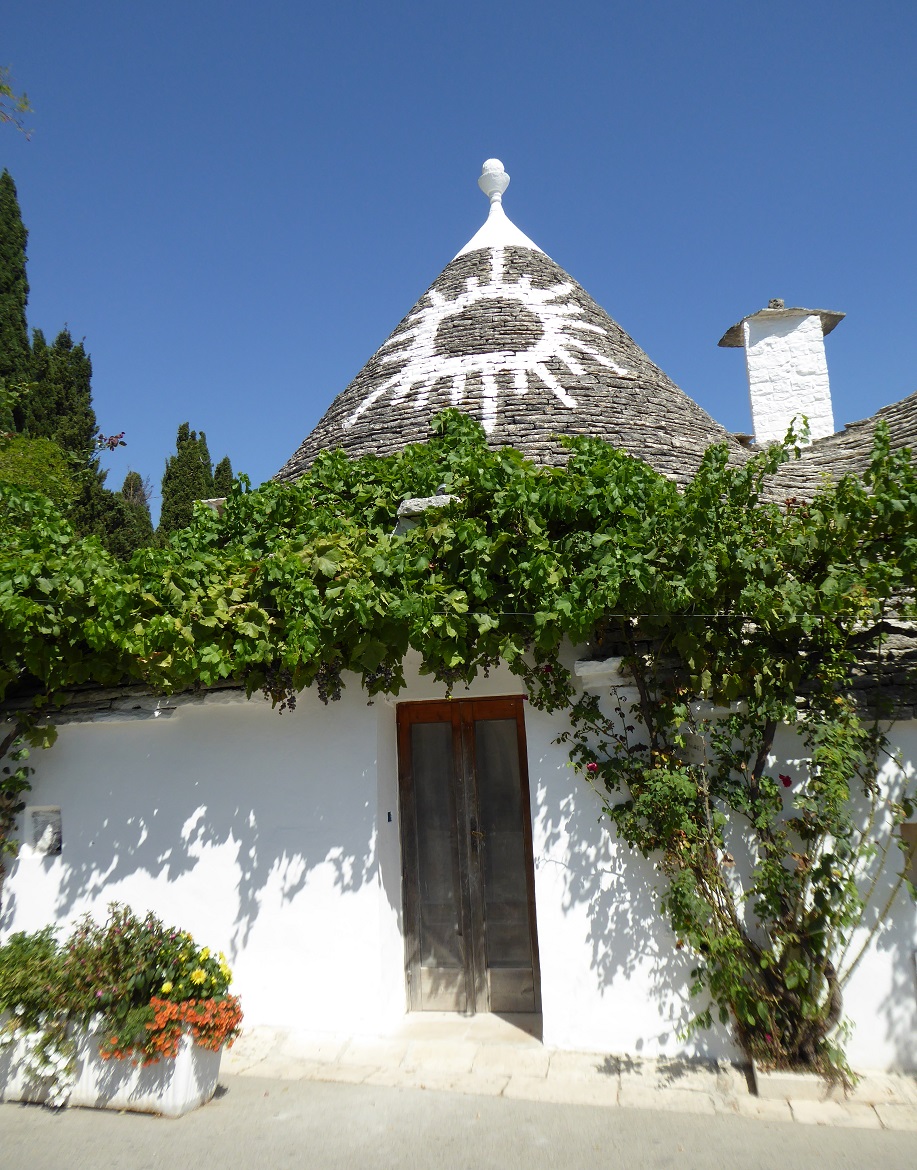
Getting to Alberobello
We visited Alberobello on our last full day in Ostuni. Through our hotel we had engaged a driver, Memo, and his car, a very nice black Mercedes, to take the 40 minute drive from Ostuni to Alberobello (€115 return, 2016). Upon arriving, Memo gave us some advice on vantage points and what to see and left us to explore. We had allocated three hours for our visit.
A Panorama of Trulli
The first thing we did on Memo’s advice was head up to the panoramic lookout. We were a little surprised to find that the main viewing area had been taken over by a furniture brand for what appeared to be a promotion or a product range launch.
However there were other vantage points, so we didn’t miss out on the amazing view of dozens of Trulli clustered together, a sea of white and grey against the bright blue Pugliese sky.
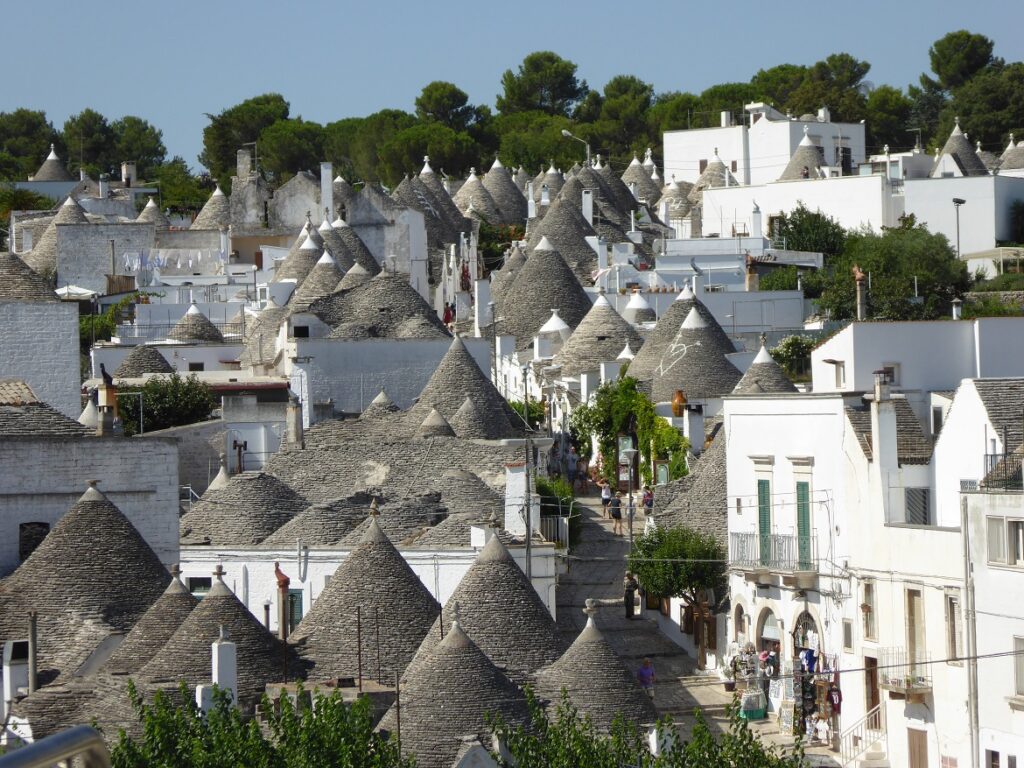
The Trulli Close Up
The reason why the Trulli were built without mortar is that they are quite easy to construct, and more importantly, easy to disassemble. Apparently in centuries past, taxes were collected based on the size of your dwellings. So to be able to quickly reduce some or all of your home to rubble when you hear that the taxman is on the way to town was a huge advantage.
Additional conical rooms were joined to existing structures as families grew and as livestock numbers increased. In some cases, symbols were painted on roofs to reflect religious beliefs or to symbolise astrological meaning. They are intended to bring luck to those who live within the Trullo and also ward off evil spirits.
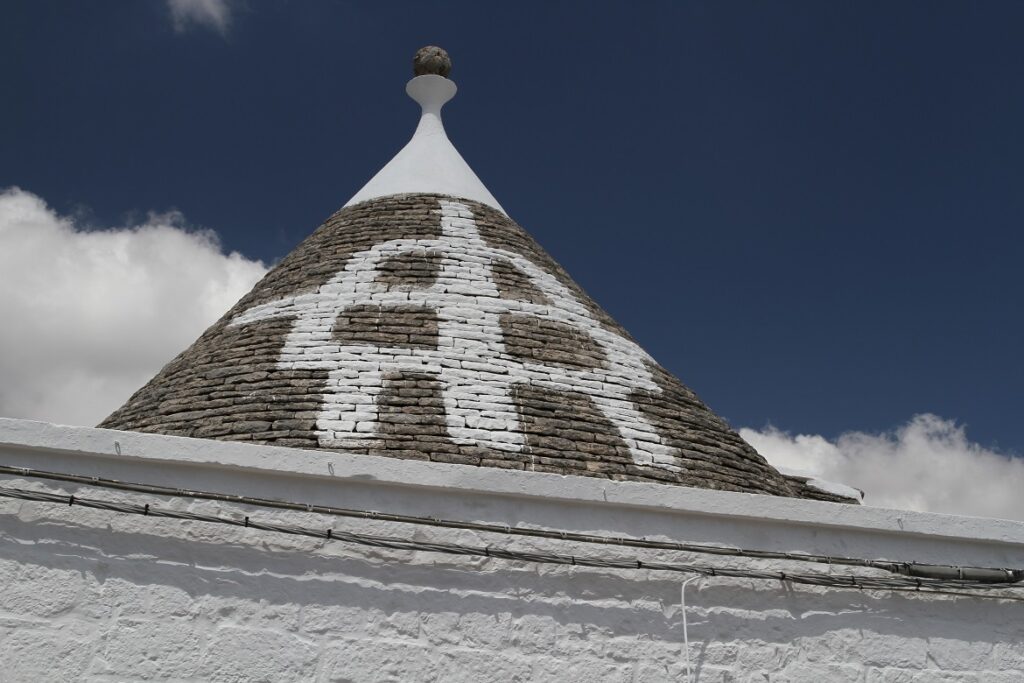

Walking the small pedestrian streets amongst the Trulli felt like a fairytale setting. Not surprisingly, many Trulli are now used for tourism and accommodate shops, galleries or are set up to display how life was traditionally lived in these round structures.
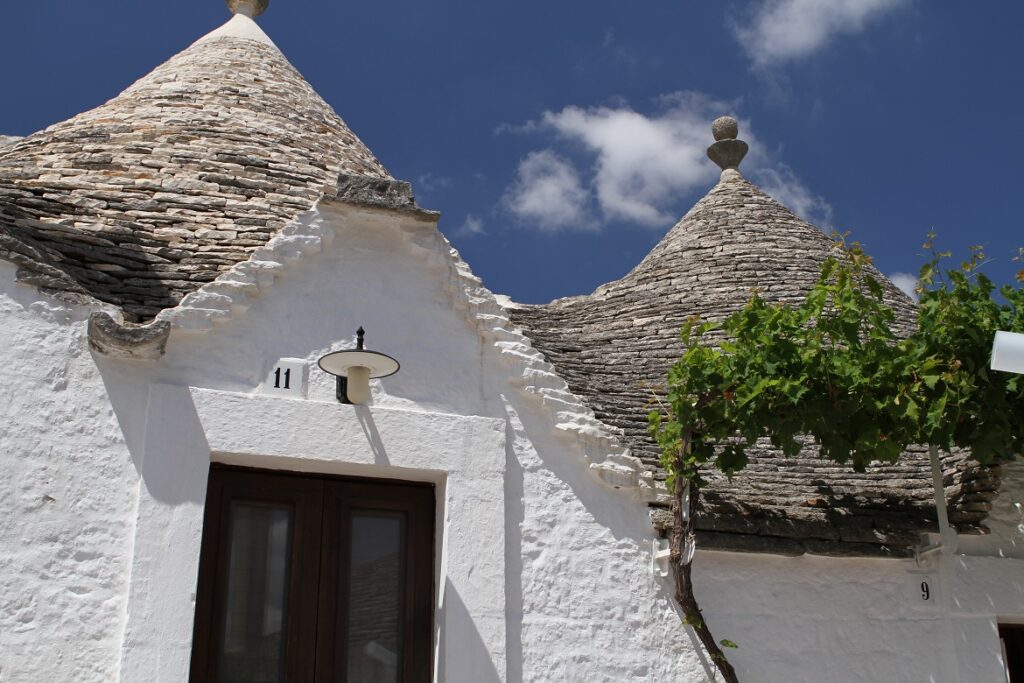


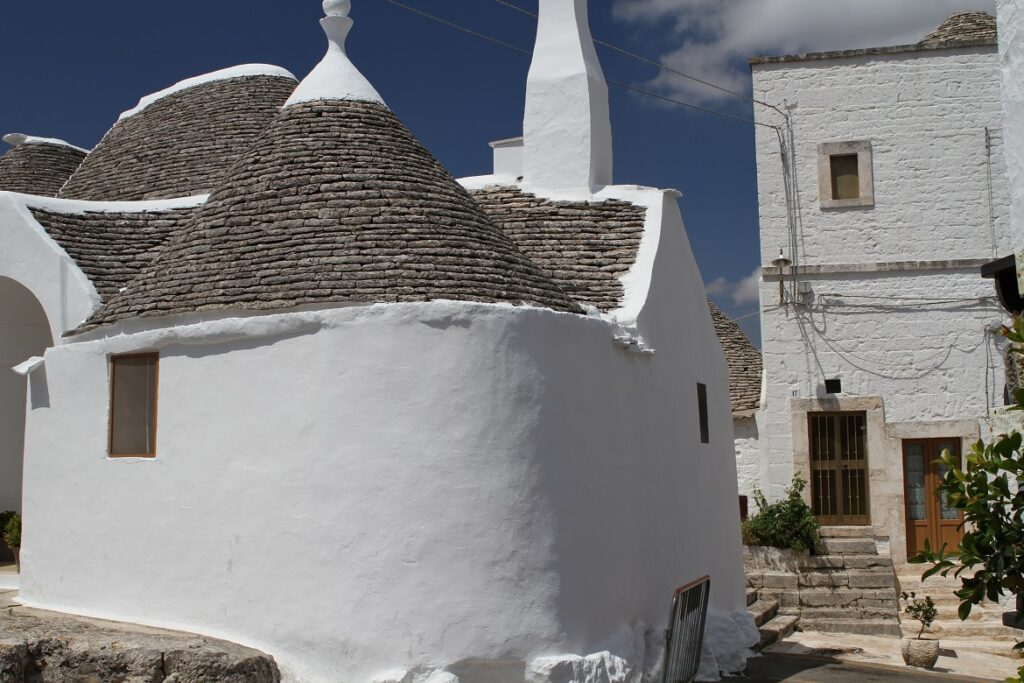
A Little More of Alberobello
It was easy to spend our three hours completely immersed in the photogenic Trulli. However, we did manage to make our way to the Basilica of Saints Cosmas and Damian (‘Basilica di Santi Medici Cosma e Damiano’). This Basilica is worth a visit if time permits, with a beautiful sandstone frontage and twin bell towers. Originally established in 1609, the church grew in size over time, not reaching its final form until 1885.
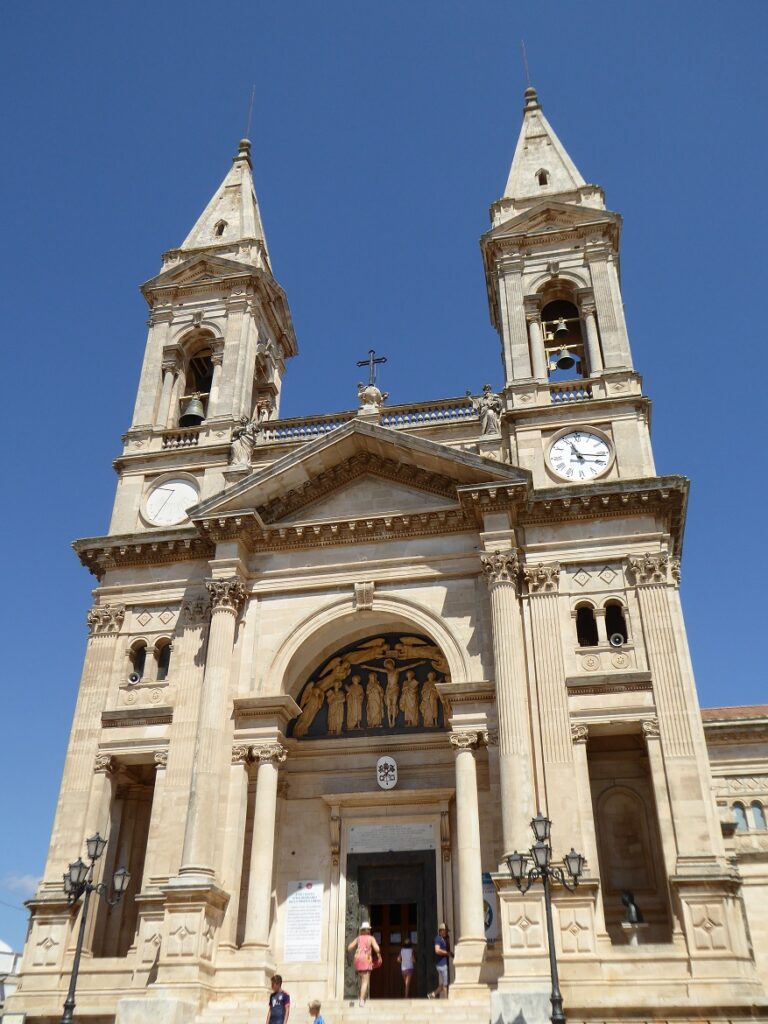
At the end of our three hours, Memo and his lovely Mercedes were on time at the meeting point, and we headed back to Ostuni to relax for the afternoon.
Finishing the Day with a Delicious Dinner
That night we had dinner in the ‘cave room’ of Osteria del Tempo Perso not far from our hotel. While reflecting on the Trulli visit, we shared octopus in tomato sauce, which was beautifully tender. The super crisp zucchini flowers stuffed with ‘baccala’ (cod) were also amazing. For mains we both had orecchiette and fricelli, the traditional pasta shapes of the region, with a delicious lamb ragu. We followed our pasta with limoncello soaked Rum Baba. With wine, dinner came to €81 (July 2016). We went to bed happy as the Ostuni leg of our trip came to a close.
